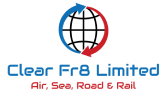Rail Freight Services
Rail routes are expanding all the time especially with the introduction of the “One Belt, One Road” services from Eastern China to Germany and Poland. Although trialled there are currently no regular services to the UK however for time sensitive loads you are able to save around a week to 10 days when compared to movement by sea container at around 60% less than the cost of airfreight. Full and part loads available, containers are broken down in Europe and moved by road for the final part.
Rail freight is a type of transportation that involves the movement of goods by trains. Rail freight is an efficient and cost-effective mode of transportation for long distances and large quantities of goods. Rail freight is commonly used to transport raw materials such as coal and iron ore, as well as finished goods like vehicles and consumer products.
One of the main advantages of rail freight is its ability to transport large volumes of goods over long distances, making it an ideal mode of transport for goods that need to be moved quickly and efficiently. Rail freight is also more environmentally friendly than other modes of transport, such as road and air transport, as it produces fewer emissions per tonne-kilometer.
Rail freight is often cheaper than road transport, especially for long distances, as it requires less fuel and has lower maintenance costs. Rail freight is also more reliable than road transport because trains are less susceptible to traffic congestion and can be scheduled more accurately.
Rail freight can be used for intermodal transportation, which is the use of multiple modes of transportation to move goods from one place to another. For example, goods can be transported by rail from a production facility to a railway terminal, and then transported by truck to their final destination.
Rail freight can also be used for international transportation, as trains can cross borders and transport goods between countries. However, rail freight can be subject to regulatory requirements and customs procedures, which can add time and cost to the transportation process.
In conclusion, rail freight is a cost-effective and efficient mode of transportation for large quantities of goods over long distances. It is environmentally friendly, reliable, and can be used for intermodal and international transportation. While rail freight has some limitations, such as last-mile delivery challenges and regulatory requirements, it remains an important mode of transportation for the movement of goods.
